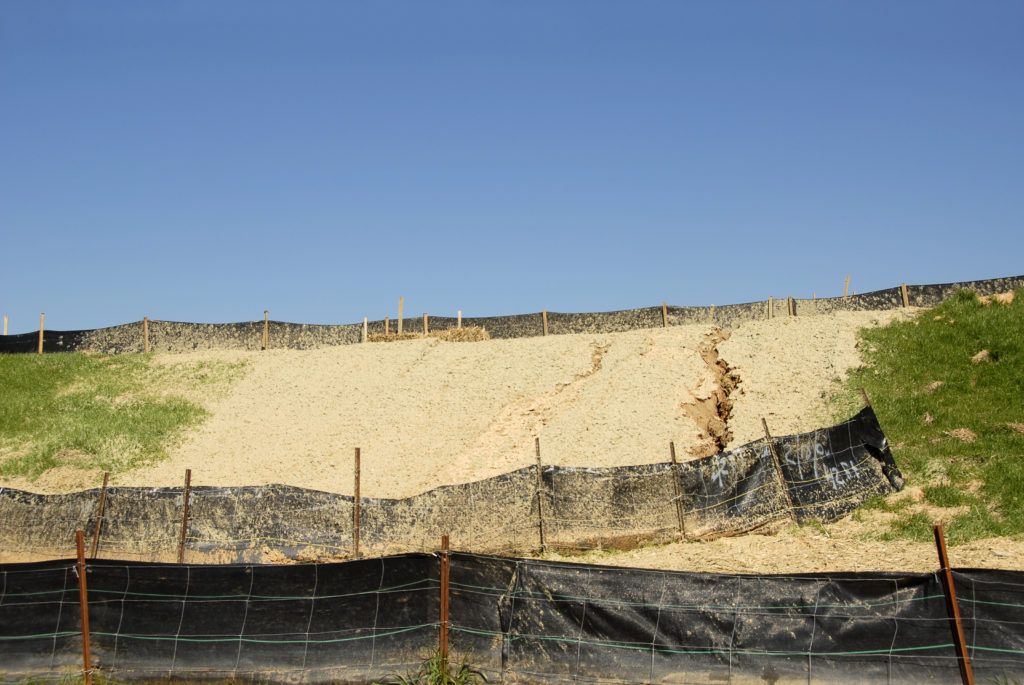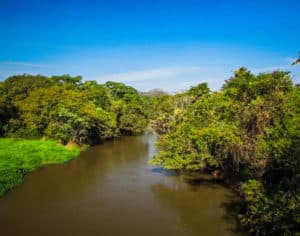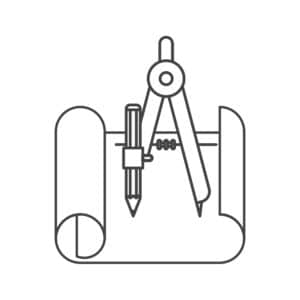Sediment occurs during a rainfall event after stabilized land is disturbed for construction. When the earth below stabilized ground cover such as grass and paved areas is exposed, the loose dirt on the surface will tend to wash away as sediment during rainfall events.
As part of the land development design, measures would most likely have to be included as part of the design to control this sediment and prevent it from leaving the project site as much as possible.
The following are six common methods to control sediment.
1) Rock construction entrance
2) Silt fence
3) Silt sock
4) Inlet protection
5) Sediment trap
6) Sediment basin
1. Rock Construction Entrance
A rock construction entrance is a rock pad that is used by the drivers of construction vehicles to drive over as a way to get the majority of the construction dirt off of the wheels before the drivers leave the construction site. Some entrances will even include a wash rack as an additional measure to remove dirt from the wheels.
The rock construction entrance for a site will usually be located where a proposed driveway or road intersects an existing road. The rock pad would just have to be converted to a regular driveway or road toward the end of construction.
This entrance also functions as a way to let contractors know where they are allowed to enter and exit the construction site.
2. Silt Fence
Silt fence is a geotextile that is installed with a series of posts along the downstream edge of proposed construction. The function of silt fence is to filter out sediment as stormwater runoff flows through the fence.
The height of the fence used can vary depending on both the distance and the slope of the path of water flow behind the fence.
3. Silt Sock
Similar to silt fence, the function of silt sock is also to filter out sediment as water flows through it during a rainfall event. Instead of just a geotextile, special fabric tubes filled with biodegradable materials are used to filter out the sediment.
The size of the tubes used for a project will also vary depending on both the distance and the slope of the path of water flow behind the socks.
4. Inlet Protection
Inlet Protection is a method to control sediment for stormwater runoff that flows into existing or proposed storm drains.
This protection could be in the form of a special design required by the reviewing agency for the project or it could be in the form of a special filter bag that is manufactured specifically for the purpose of controlling sediment at inlets.
5. Sediment Trap
A sediment trap usually utilizes a proposed stormwater management basin to temporarily control sediment from small drainage areas (up to a couple of acres). At the end of construction, the sediment trap would have to be converted to the proposed stormwater management basin.
6. Sediment Basin
A sediment basin is similar to a sediment trap in that is utilizes a proposed stormwater management basin to control sediment. However, a sediment basin is able to handle much larger drainage areas that are greater than just a couple of acres.
At the end construction, the sediment basin would also have to be converted to the stormwater management basin. In the case that a required sediment basin is larger than the required stormwater management basin, some additional grading may be required as a part of the conversion.
An Important Part of the Land Development Approval Process
In order for a land development project to be approved for construction, it is likely that a proper plan for sediment control will be required. Your civil engineer should know the requirements for sediment control for the reviewing agency for your project and should be able to include these requirements accordingly.



